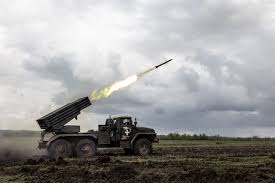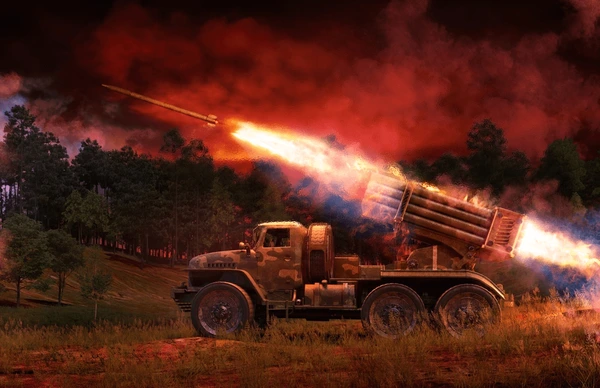
The BM-21 Grad is a Soviet truck-mounted 122-mm multiple rocket launcher, developed in the early 1960s. The development of the 122 mm BM-21 Grad divisional-level RSZO took place in the mid-1950s under the guidance of the Splav Scientific Production Concern at Tula.

The BM-21 122 mm multiple rocket launcher (MRL) system entered into service with the Soviet Army in 1963 to replace the aging 140 mm BM-14 system. The main role of the BM-21 Grad system is to support the division with suppressive fire to counter anti-tank missile, artillery and mortar positions, destroy strong points and eliminate enemy nodes of resistance on the immediate battlefield.

| Armament | Truck |
| 40 launch tubes 122 mm caliber | Ural-375D 6×6 |
| Country users | Weight |
| Afghanistan, Algeria, Angola, Armenia, Azerbaijan, Belarus, Bosnia, Bulgaria, Burundi, Cameroon, Cambodia, RDC, Congo, Croatia, Cuba, Cyprus, Egypt, Ethiopia, Finland, Georgia, Hungary, India, Iran, Israel, Kazakhstan, North Korea, Kyrgyzstan, Lebanon, Libya, Mali, Mongolia, Morocco, Mozambique, Myanmar, Namibia, Nicaragua, Pakistan, Peru, Poland, Russia, Serbia and Montenegro, Seychelles, Somalia, Sudan, Syria, Tajikistan, Tanzania, Turkmenistan, Uganda, Ukraine, Uzbekistan, Vietnam, Yemen, Croatia, Zambia | 13,700 kg fully loaded |
| Designer Country | Speed Truck |
| Russia | 80 km/h |
| Accessories | Range Truck |
| PG-1M panoramic telescope | 800 km |
| Crew | Dimensions |
| 6 | Length: 7.35 m; Width: 2.04 m; Height: 3.09 m |
| Weight Rocket | Armour |
| 77 kg | No protection |
| Firing Range | Engine truck |
| 20 km with standard rockets and 35 to 40 km with new-generation of rockets | V-8 gasoline ZiL-375 180 hp (130 kW) |



